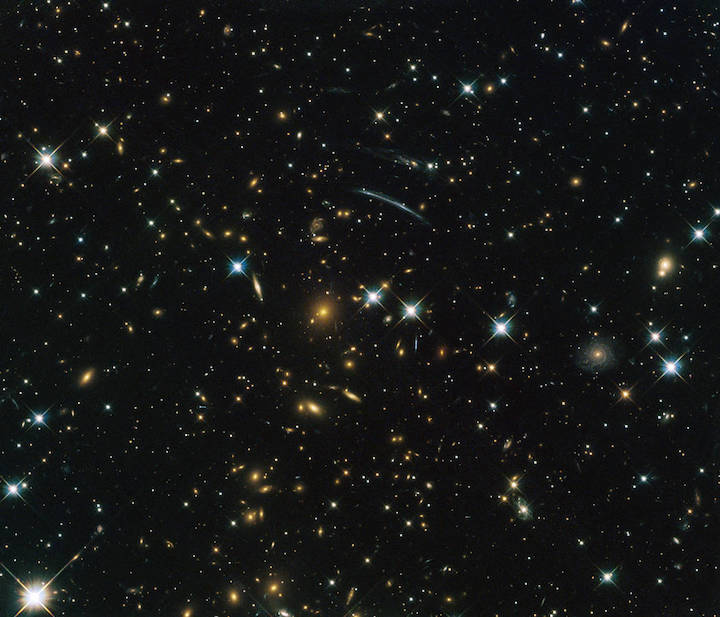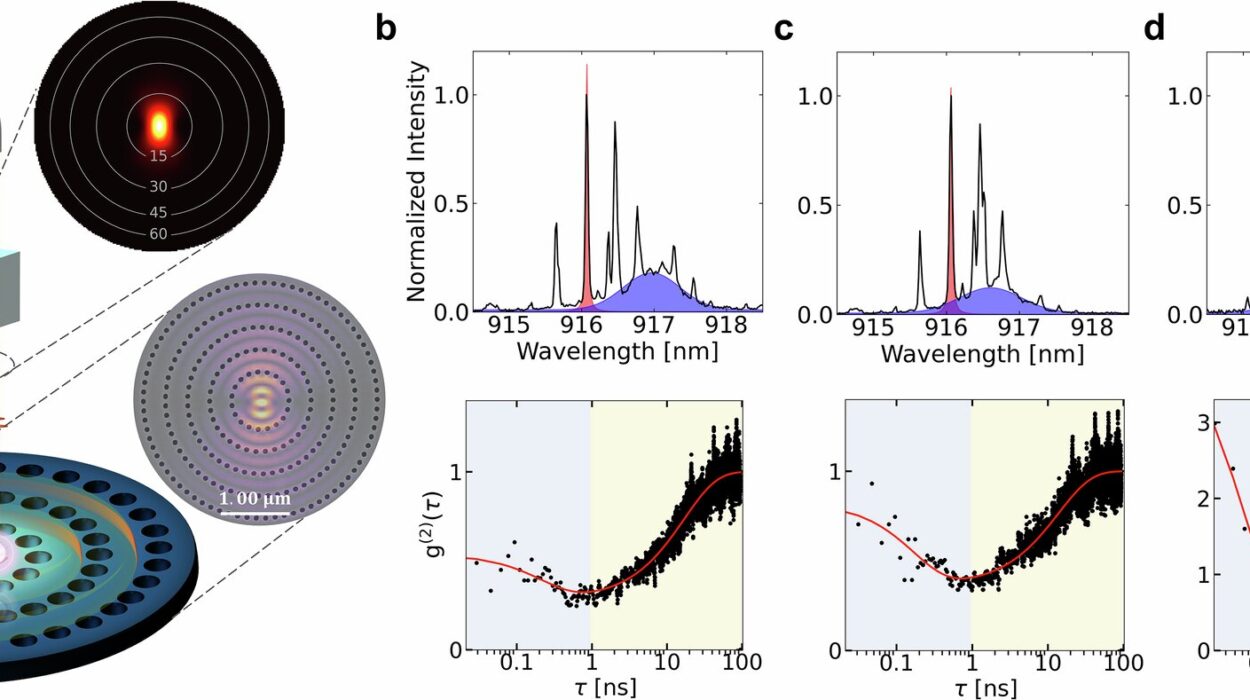The human brain was not built to comprehend the sheer scale of the universe. Our instincts are tuned for throwing spears across plains, not measuring galaxies across trillions of miles. We understand distances in feet, yards, or kilometers, maybe a few thousand miles if we’re feeling ambitious. But the cosmos scoffs at our Earth-bound sense of size. To measure its grandeur, we need a new unit—something that captures the massive gulfs between stars and galaxies. Enter the light-year.
The term sounds poetic, as if it could describe a measure of time, an era bathed in illumination. And in a way, it does involve time—but not in the way most people think. A light-year isn’t a measure of time at all. It’s a measure of distance, one that begins to make sense only when you try to imagine how fast light travels and how far it can go in a single year.
Light: The Speed Demon of the Cosmos
Before we can grasp what a light-year really is, we need to understand the star of the show: light itself. Light is fast—so fast that, for all practical purposes, it is the speed limit of the universe. In the vacuum of space, light travels at approximately 299,792 kilometers per second, or about 186,282 miles per second. That’s fast enough to circle the Earth nearly eight times in one second.
This isn’t just trivia. The speed of light is central to the fabric of reality. According to Einstein’s theory of relativity, nothing with mass can reach or exceed this speed. It acts like a universal constant, woven into the very geometry of space and time. When we say something is “X light-years away,” we’re saying that the light from that object has taken X number of years to reach us, traveling at this unfathomable speed.
A Light-Year: Distance Measured in Time
So what exactly is a light-year? Strip away the poetic language, and you’re left with a pure calculation. A light-year is the distance light travels in a vacuum over the course of one year. Multiply the speed of light by the number of seconds in a year, and you get the magic number: about 9.46 trillion kilometers, or roughly 5.88 trillion miles.
This means that when you look up at a star that’s one light-year away, you’re not seeing it as it is right now. You’re seeing it as it was one year ago. You’re peering into the past, receiving photons that began their journey when you were a younger version of yourself.
Distances measured in light-years let astronomers navigate the cosmos with a ruler long enough to span galaxies. Instead of saying a galaxy is 58,000,000,000,000,000,000,000 miles away, they can simply say it’s 6.1 million light-years distant. The light-year makes the unimaginable just a little more manageable.
The Closest Neighbors: Light-Years in Our Cosmic Backyard
Even within our local celestial neighborhood, distances measured in light-years emphasize how lonely space truly is. The Sun, our life-giving star, is just over 8 light-minutes away. That’s close enough that we still talk in minutes, not years. But once you venture beyond the solar system, everything stretches out.
The nearest star system to Earth, Alpha Centauri, lies about 4.37 light-years away. If you boarded the fastest spacecraft ever built, the Parker Solar Probe, which travels at about 700,000 kilometers per hour, it would still take over 6,700 years to get there. That’s 85 human lifetimes, give or take. When we talk about space travel beyond our solar system, we’re talking science fiction—at least for now.
Beyond Alpha Centauri lies a sea of stars, gas, and dust spanning thousands of light-years. The Milky Way itself, our home galaxy, is about 100,000 light-years across. That means light from one end of the galaxy takes 100,000 years to reach the other side—longer than Homo sapiens have existed as a species.
Telescopes as Time Machines
One of the most magical consequences of the light-year is that it turns telescopes into time machines. When you gaze into the night sky through a telescope, you’re not just looking into space; you’re looking back in time. The farther away the object, the older the light you’re seeing.
Consider the Andromeda Galaxy, the nearest spiral galaxy to the Milky Way. It’s about 2.5 million light-years away. When you look at Andromeda through a telescope, you’re seeing it as it was 2.5 million years ago. That’s around the time early human ancestors were just beginning to use stone tools.
The Hubble Space Telescope and its successors, like the James Webb Space Telescope, are specifically designed to take advantage of this time-travel effect. They peer so deeply into the cosmos that they capture the light from galaxies formed just a few hundred million years after the Big Bang. These ancient photons, having traversed space for over 13 billion years, are messengers from the dawn of time.
Why Not Use Miles or Kilometers?
At first glance, it might seem odd to abandon standard units like kilometers or miles. After all, science is about precision, and both are well-established units. But when dealing with cosmic distances, those units become unwieldy. Saying that the Sun is 150 million kilometers away is fine. Saying that the next closest star is 40 trillion kilometers away, not so much.
Imagine trying to measure the distance from Earth to a galaxy 2.5 billion light-years away using miles. You’d need to write down a number with 21 zeros. It would be not just impractical—it would be meaningless to most people. The light-year simplifies this. It’s elegant, consistent, and intimately tied to how we observe the universe.
Beyond the Light-Year: Other Cosmic Units
While the light-year is the most well-known unit for astronomical distances, it’s not the only one. Scientists often use parsecs, another unit rooted in how we observe distant stars. One parsec equals about 3.26 light-years. The term comes from “parallax arcsecond” and relates to the method of triangulating distances by observing stars from different positions in Earth’s orbit.
When cosmologists deal with the truly large-scale structure of the universe, they switch to even bigger units like megaparsecs (millions of parsecs) or gigalight-years (billions of light-years). These units help them map the cosmic web—the vast lattice of galaxies and dark matter that forms the backbone of the universe.
Light-Years and the Expanding Universe
Things get trickier when you account for the expansion of the universe. Space itself is stretching, and this complicates how we interpret distances. A galaxy we observe as being 13 billion light-years away emitted its light 13 billion years ago, but it’s much farther away now due to the continuous expansion of the universe.
In fact, some of the light we see today was emitted by galaxies that are now over 30 billion light-years away. These aren’t contradictions—they’re consequences of Einstein’s General Relativity. Space isn’t static; it’s dynamic, and the light-year must be interpreted with care in this cosmic context.
Astronomers use various distance measures—comoving distance, proper distance, look-back time—to account for this. But for the general public, the light-year remains a beautifully intuitive way to grasp the enormity of space.
Communicating Cosmic Wonder
Part of what makes the light-year such a compelling concept is its ability to bridge the gap between human experience and cosmic reality. It packages the vast into the understandable, the alien into the familiar. When you tell someone that the light from a star left before the invention of writing, you’re giving them a window into time as much as space.
Children learning about stars often feel a thrill when they first realize that they’re looking at ancient light. It’s a profound moment of connection, one that transcends textbooks. The light-year is more than a unit of measurement—it’s a poetic vessel that carries the story of the universe across the ages.
Implications for Extraterrestrial Life
The light-year also has profound implications for the search for extraterrestrial life. Suppose we detect a radio signal from a planet 100 light-years away. That signal was sent a century ago. By the time we receive it, the civilization that transmitted it might have changed beyond recognition—or even ceased to exist. And if we send a reply, it would take another 100 years to get there.
This time delay complicates any kind of real-time communication. It also forces us to think in broader terms. Perhaps what matters isn’t exchanging messages but realizing that intelligent life could exist—or did exist—elsewhere in the universe. The light-year forces us to expand our temporal imagination, just as it expands our spatial one.
Measuring the Immeasurable
There’s something deeply humbling about the concept of the light-year. It reminds us that we are small—infinitesimally so—on the scale of the cosmos. Yet it also reminds us that we are capable of measuring the seemingly immeasurable, of contemplating things far beyond the reach of our hands or our lifetimes.
Astronomers, using tools of math and physics, can measure the distance to stars and galaxies with astonishing accuracy. They do this through parallax, redshift, brightness comparisons, and the cosmic microwave background. All these methods converge to paint a picture of a universe vast beyond comprehension—and growing vaster by the second.
The Light-Year in Popular Culture
The light-year has captured the imagination of writers, filmmakers, and artists. In science fiction, it’s shorthand for epic journeys and distant frontiers. A ship might travel 10 light-years in an afternoon thanks to warp drives or wormholes. These fictional devices may be speculative, but they highlight the challenge that real physics presents: traveling even a single light-year would require immense energy and time.
Still, the light-year inspires. It’s a symbol of the frontier, of what lies beyond. It serves as a backdrop for stories that grapple with isolation, discovery, and the persistence of hope. Whether it’s Star Trek, Interstellar, or The Expanse, the light-year lurks in the background, silently whispering of distances yet to be crossed.
Light-Years into the Future
As we develop new telescopes and space probes, the light-year will remain our guidepost. It will measure how far our eyes can see and how deep our minds can reach. Projects like the Square Kilometer Array, future interstellar probes, and ambitious missions to other stars will all be charted in light-years.
One day, perhaps centuries from now, humanity may build ships that can traverse light-years. We may plant our feet on worlds that today are mere pixels on a telescope’s screen. If that day comes, it will be thanks to our ability to think in units as vast as light-years, and to dream across those vast gulfs of darkness.






